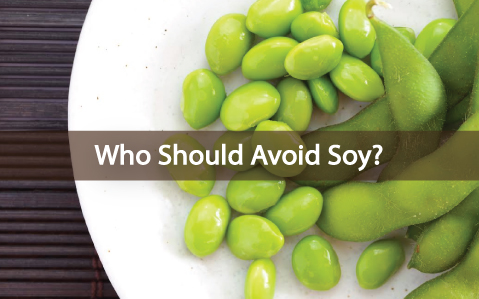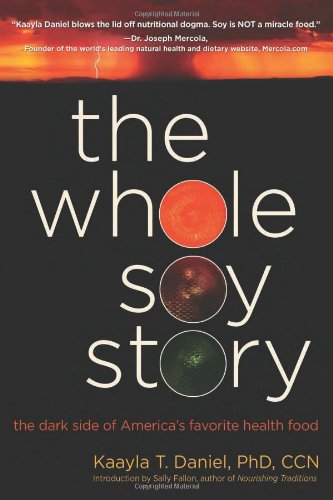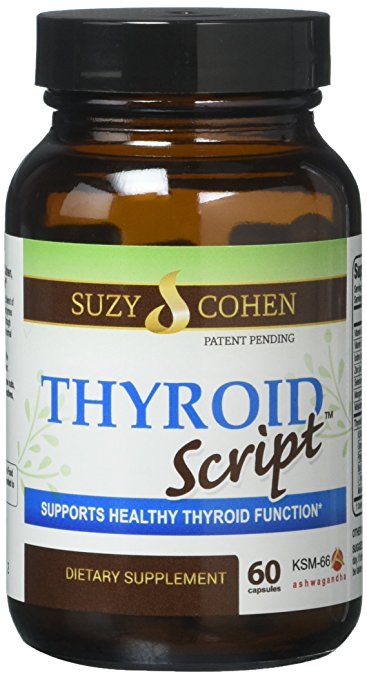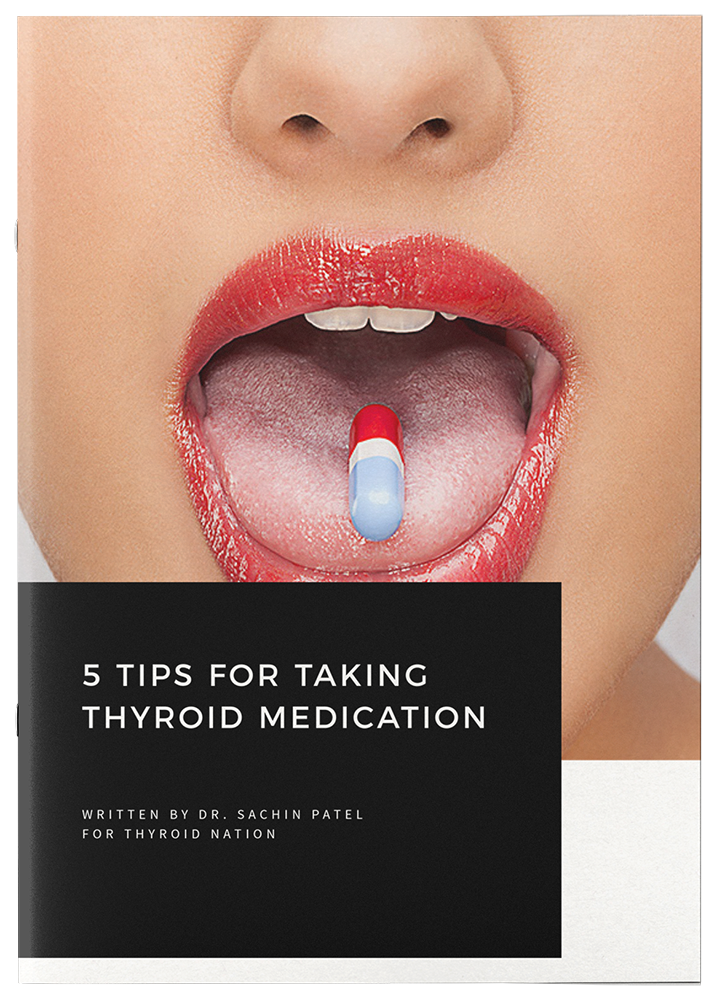
Dr. Mercola
Thyroid Nation
Dr. Joseph Mercola discusses the ill-effects that soy has on your health and your thyroid.
The perception that soy is a “health food” is a very common one. This is highly unfortunate, for a number of reasons which I’ll discuss here.
How Soy Became Known as a “Health Food”
But first, let’s review a bit of the history behind soy that created this misperception in the public’s mind. Years ago, tropical oils, such as palm and coconut oil, were commonly used in American food production. However, these are obviously not grown in the US. With the exception of Hawaii, our climate isn’t tropical enough.
Spurred on by financial incentives, the industry devised a plan to shift the market from tropical oils to something more “home grown.” As a result, a movement was created to demonize and vilify tropical oils in order to replace them with domestically grown oils such as corn and, primarily, soy.
For the most part, they’ve been very successful in their campaign to paint soy in a healthy light. So, the information I have to share with you may disappoint and challenge many of you, especially vegetarians, because vegetarians and vegans use soy as one of their primary sources of protein.
But I’m here to tell you that after studying this issue very carefully, I’m convinced that unless the soy you’re consuming is fermented, you’re putting your health at risk.
Fermented Soy is the Only Type of Soy with Health Benefits
There’s only one type of soy that can be construed as a health food, and that is fermented soy. Examples of health-promoting fermented soy foods include:
- Natto
- Miso
- Tempeh
Natto is actually a phenomenal food. It’s a fermented soy product that can be a bit challenging to locate, but you can usually find it in Asian food stores. It’s very high in vitamin K2, which is a phenomenal vitamin, much like vitamin D.
Together, vitamin K2 and vitamin D provide a large number of significant health benefits, such as improving bone density and reducing your risk of heart disease and cancer, just to name a few. Natto has probably the highest concentration of vitamin K2 out of any food.
Miso and tempeh do not contain vitamin K2 but they are also fermented forms of soy that are excellent sources of health-promoting natural probiotics.
The fermentation process is what makes soy a healthy addition to your diet, as it breaks down the goitrogens, isoflavones and other harmful elements in the soy. It’s important to realize that tofu is NOT a fermented soy product, and should not be consumed if you want to avoid the health problems associated with non-fermented soy.
It is also important to understand that while fermented soy is healthier for you, it is not wise to consume it in large quantities because it is still loaded with phytoestrogens, like isoflavones, which can cause detrimental feminizing effects.
What’s So Bad About Unfermented Soy?
One of the primary reasons for avoiding soy products is because the vast majority of soy grown in the US is genetically modified (GM) soy. The GM variety planted in 91 percent of US soy acres is Roundup Ready—engineered to survive being doused with otherwise lethal amounts of Monsanto’s Roundup herbicide. Monsanto produces both the Roundup Ready soy seeds and the herbicide Roundup.
The logic — if you can call it that after all factors are considered — behind GM crops such as soy is that you can decrease the cost of production by killing off everything except the actual soy plant. Unfortunately, consumers pay a hefty price in terms of health instead.
Are You Willing to Risk Eradicating Your Future Family Lineage?
Some of the more recent research shows that many of the health problems do not even occur in those who consume these GM foods. Some of the most devastating harm may occur in the second and third generations! I recently interviewed GMO expert Jeffrey Smith about the latest findings by Russian scientists, who discovered that GM soy effectively sterilized the third generation of hamsters.
I’ve written extensively about the health hazards of GM foods. If you’re new to this topic and want more information, my article Everything you MUST KNOW About Dangerous Genetically Modified Foods is a good place to start.
You can also find lots of additional information about GMOs on the site ResponsibleTechnology.org, created by Jeffrey Smith. We’re working with Jeffrey, who is one of the leaders of the movement to restrict the use of GM foods in the United States, as they have done in Europe, primarily through consumer awareness and action to motivate industry changes, because there is NO government regulation against it.
Why All Organic Soy is NOT the Answer Either
All of that said, even if you were fortunate enough to find organic soy, there are still several other significant concerns with unfermented soy that make it far from attractive from a health standpoint.
Soy contains a number of problematic components that can wreak havoc with your health, such as:
- Goitrogens – Goitrogens, found in all unfermented soy whether it’s organic or not, are substances that block the synthesis of thyroid hormones and interfere with iodine metabolism, thereby interfering with your thyroid function. One common source of soy is soy milk. Many consume it as an alternative to milk or one of their primary beverages. Soy milk is a significant contributor to thyroid dysfunction or hypothyroidism in women in the US.So if you’re a woman struggling with low thyroid function and you’re consuming soy milk, that’s a giant clue you need to stop drinking it immediately.
- Isoflavones: genistein and daidzein – Isoflavones are a type of phytoestrogen, which is a plant compound resembling human estrogen, which is why some recommend using soy therapeutically to treat symptoms of menopause. I believe the evidence is highly controversial and doubt it works. Typically, most of us are exposed to too much estrogen compounds and have a lower testosterone level than ideal, so it really is important to limit exposure to feminizing phytoestrogens. Even more importantly, there’s evidence it may disturb endocrine function, cause infertility, and promote breast cancer, which is definitely a significant concern. Drinking two glasses of soy milk daily for just one month provides enough of these compounds to alter your menstrual cycle. Although the FDA regulates estrogen-containing products, no warnings exist on soy.
- Phytic acid — Phytates (phytic acid) bind to metal ions, preventing the absorption of certain minerals, including calcium, magnesium, iron, and zinc — all of which are co-factors for optimal biochemistry in your body. This is particularly problematic for vegetarians, because eating meat reduces the mineral-blocking effects of these phytates.
Sometimes it can be beneficial, especially in postmenopausal women and in most adult men because we tend to have levels of iron that are too high which can be a very potent oxidant and cause biological stress. However, phytic acid does not necessarily selectively inhibit just iron absorption; it inhibits all minerals. This is very important to remember, as many already suffer from mineral deficiencies from inadequate diets. The soybean has one of the highest phytate levels of any grain or legume, and the phytates in soy are highly resistant to normal phytate-reducing techniques such as long, slow cooking. Only a long period of fermentation will significantly reduce the phytate content of soybeans. - Natural toxins known as “anti-nutrients” — Soy also contains other anti-nutritional factors such as saponins, soyatoxin, protease inhibitors, and oxalates. Some of these factors interfere with the enzymes you need to digest protein. While a small amount of anti-nutrients would not likely cause a problem, the amount of soy that many Americans are now eating is extremely high.
- Hemagglutinin — Hemagglutinin is a clot promoting substance that causes your red blood cells to clump together. These clumped cells are unable to properly absorb and distribute oxygen to your tissues.
Soy to Avoid
As I mentioned, tofu is not fermented soy so it should be avoided. Other examples of common soy products to avoid include soy protein and isolated soy protein powder, which you’ll find in many protein bars and protein drinks.
Isolated soy protein powder is actually not a naturally produced substance. Production takes place in industrial factories where a slurry of soybeans is first mixed with an alkaline solution to remove fiber, then precipitated and separated using an acid wash and, finally, neutralized in an alkaline solution. Acid washing in aluminum tanks leaches high levels of aluminum into the final product.
The resultant curds are spray-dried at high temperatures to produce a high-protein powder. MSG, a well-known excitotoxin that can cause neurological damage, is frequently added as well. Another common form of soy you’re likely exposed to is soy oil, which brings us back to where we started. Ninety-five percent of the foods Americans spend their money on are processed foods, many of which contain soy oil.
Soy oil is extremely high in omega-6, which is highly susceptible to oxidative damage. And although you do need omega-6, soy oil is a terrible source as it is highly processed and refined, which severely damages it.
Consuming a diet high in processed foods, which by default is high in soy oil, is a primary contributor to the severe imbalance most people have in their omega-3 to omega-6 ratio, which in turn contributes to creating disease. Other harmful soy products I’ve not already mentioned include:
- Soy cheese
- Soy ice cream
- Soy yogurt
- Soy “meat” (meatless products made of TVP)
- Soy lecithin
Infant Soy Formula – Perhaps the Most Dangerous Soy Products of All
But perhaps one of the most harmful types of soy products that you need to be extremely cautious of is soy infant formula. I strongly recommend every single mother to breastfeed for a minimum of six months, preferably longer. There is absolutely no question that breastfeeding is the most healthful option for both you and your baby. Conventional physicians and the American Academy of Pediatrics also recommend exclusive breastfeeding for the first six months of life.
Unfortunately, for a variety of reasons, many women choose not to breastfeed their child, leaving them with few alternatives. Most opt for conventional formula, which has its own health risks, courtesy of inadequate nutrition (there are at least 400 nutrients in breast milk that are not found in formula), combined with excessive fructose and toxic contaminants. But many children are allergic to conventional formula, and these parents can easily be convinced that soy formula is the solution.
Sadly, soy formula is FAR worse than conventional formula, in large part due to its excessive levels of phytoestrogens. The estrogens in soy can irreversibly harm your baby’s sexual development and reproductive health. Infants fed soy formula receive a level of estrogen equivalent to five birth control pills every day!
Infants fed soy formula have up to 20,000 times the amount of estrogen in circulation as those fed conventional formulas! In addition, soy formula has up to 80 times higher manganese than is found in human breast milk, which can lead to brain damage in infants, and altered behaviors in adolescence.
So please, do not ever feed your baby soy formula, and warn others who are pregnant or who you know are considering using formula over breastfeeding. The next best alternative to breast milk is to make a healthy homemade infant formula. There may be others, but here is one recipe for homemade formula created by the Weston Price Foundation, which I believe is sound.
Educate Yourself about the Health Effects of Soy
 I encourage you to continue reviewing the evidence against soy if you’re still skeptical. There are also some great books on this topic that document this information in clear detail and provide countless references that you can validate for yourself. One of these books, which I recommend very highly, is The Whole Soy Story by Dr. Kaayla Daniel.
I encourage you to continue reviewing the evidence against soy if you’re still skeptical. There are also some great books on this topic that document this information in clear detail and provide countless references that you can validate for yourself. One of these books, which I recommend very highly, is The Whole Soy Story by Dr. Kaayla Daniel.
There’s a lot of information out there, and I understand the challenge of trying to explore these health issues. Many times motivations must be taken into account in order to sift through the information and get to the heart of the matter.
In the case of soy, as I mentioned, a primary motivation appears to have been promoting the sale of domestic soy in the US, as this increases profits, as opposed to benefitting your health… The purpose of this site is to gather this varied information, present it to you, and offer you the starting point to do your own independent research.
Because once you have the information, you have the power to take control of your own health.
**This article originally featured on Mercola.com**
Questions or anything to ask Dr. Mercola about your thyroid and eating soy? We want your thoughts in the comments section–Please!
Help Thyroid Nation create awareness for thyroid disease and share the links below…




If soy is this bad for you, what does this mean for the Asian countries that incorporate soy into their diets daily, for hundreds of years?